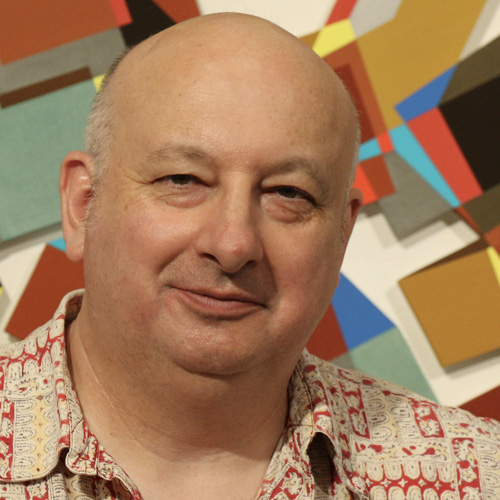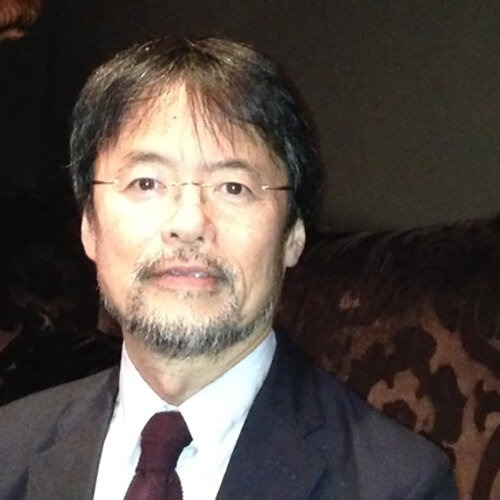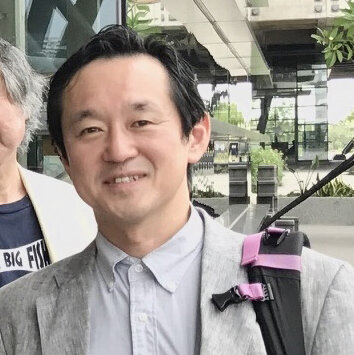Our Team
The Olfactory Art and Science Research Project includes artists and researchers in the field of olfactory art.
Yuriko Sugihara
Doshisha Women's College of Liberal Arts, Faculty of Nursing, Kyoto
Since 2001, I have been involved in dementia outpatient care as a nurse and caregiver, supporting people with dementia and their families. Since then, I have been teaching elderly nursing and home nursing as Nursing education at universities in Japan. My main research themes are support for improving the quality of life of people with dementia and their families, and support for decision making for people with dementia.
Yoko Iwasaki
Olfactory Researcher
I am an aesthetics researcher with roots in French aestheticism, focusing on art and the body. Particularly in recent years, I have been carrying out research and practice examining art concerned with taste and smell.
I began my research by building on M. Merleau-Ponty and H. Bergson’s theories of the body and E. Levinas’ theory of the other. Beginning in 2000, I developed a deep interest in the traditional Japanese art of Kôdô, “the way of the fragrance,” and I have since been practicing it myself. Kôdô is the only traditional art in the world to have elevated fragrance to the level of art, and while it flourished during the 15th century alongside the tea ceremony and flower arrangement, it is a little-known art form, even in Japan.
In 2011, I accepted a post at Kyoto Saga University of Arts, working as a teacher at a site where real artistic practice is constantly taking place. In this position, I have presided over a smell and taste research society and established a research society for teaching staff. Additionally, I launched the Perfume Art Project, allowing students to incorporate fragrance into their art, and I have also facilitated the exchange of fragrance art between students in Japan and France, visiting France several times myself. Both France, which recognizes the artistry of perfume, and Kyoto, the birthplace of the world’s first fragrance art, possess incredible sensibilities when it comes to fragrance. Exchanges between these two countries proved to be an intriguing experiment that highlighted the differences in each country’s attitude toward fragrance. Since 2015, I have participated in such activities as an exhibition coordinator, facilitating successful exchange between Japan and France.
Yasuaki Matsumoto
Artist
Research and production activities, together with many artists, engineers and scientists, link various areas across the work to production, I am promoting expanding the possibilities of art.
2016 EURYDICE (Performance by fragrance, image and sound/KYOTO,LONDON)
2016 REQIEM (Video installation/MATSUMOTO)
2015 FORBIDDEN COLOURS (Video installation / collaboration with Masayuki TOWATA / KYOTO)
2014 a sleep which isn't anyone's(Video installation/KYOTO)
2014 CAPE (Video installation/CHIBA)
2014 IRIS Negev desert (uninstalled Installation / collaboration with Masayuki TOWATA/KYOTO)
2013 SKY/SEA (Sound installation / collaboration with Masayuki TOWATA/KYOTO)
2011 DEAD SEA (Video installation/KYOTO)
2009 Flaneur (VR installation/Data Glass Project/KYOTO)
2009 iris (Sitespecific installation/collaboration with Masayuki TOWATA/KYOTO)
2008 HOMO AUDIENCE (VR installation/Data Glass Project/KYOTO)
2007 bios (Video installation / KYOTO)
2006 Feelcode (VR installation/Data Glass Project/KYOTO)
Nathan Cohen
Artist
As a professional artist I develop interdisciplinary collaborations with scientists resulting in exhibitions and published research. The scientists with whom I have collaborated internationally explore a spectrum of interests including neurobiology, robotics, augmented reality, physics and mathematics, enabling investigation of how we perceive the world around us and through our senses, embracing visual perception, haptics and the olfactory, with the resulting research expressed in the art work I create and through curation and writing.
I am also the Director of the MA Art and Science at University of the Arts London. Since creating this course in 2011 I have worked with artists, scientists, designers, technologists, engineers and graduates whose experience embraces the arts, sciences and humanities, investigating the relationships between art and science and how these might be applied creatively.
Reiko Kubota
Artist
My artwork takes different forms including painting, photography, video and 3D constructions, inspired both by historical art of different cultures and by the development of novel technologies such as LED Saccade light display and Yubi-yomu, the latter being on display in the present exhibition at Forum Kyoto.
In 2016 I participated in the 5th anniversary show at Saturation Point, London, with art work which uses traditional materials – Japanese paper and pigment ground in glue - to explore the idea of a visual rendering of polyphony, a musical form that has inspired me throughout my journey as an artist.
I have worked with scientists who specialise in cognitive science and communication devices, exploring the potential for artistic expression utilising devices derived from research into visual and haptic perception. As part of this collaborative research I have developed a new process, Polyluminous Imaging, incorporating LED Saccade display*. This was presented at The 28th Japanese Psychonomic Society Conference, Tokyo (2009) and exhibited in ‘Intangible Spaces’ at the Aisho Miura Gallery , Tokyo (2010).
Akio Maita
Researcher and Visiting Professor, Hokkaido University, Graduate School of International Media, Communication and Tourism Studies, Japan.
Recently, I have commenced studying the smell scape of a small village in Ninohe city, Iwate prefecture, focusing on the relationship between smells that are found in this area and their impact on people who visit there. In moving my research toward, I have set the two following goals:
To find out what kind of smells induce feelings of nostalgia and remind people of certain events that happened in their past life, resulting in more memorable experiences and greater visitor satisfaction.
To figure out how we could develop tourism planning that provides visitors not only with singular tour experiences but also those that are more deeply memorized by nostalgic feelings that are smell induced.
Takefumi Kobayashi
Professor, Department of Psychology, Bunkyo Gakuin University, Japan.
My main research focus has been investigating various human psychophysiological responses following odor perception. Sspecifically, I have studied effects of manipulation of odor information, such as with healthy or hazardous content, demonstrating that the manipulation has significant effects on various psychophysiological indices. Recently, I am also interested in:
Memories retrieved by stimulating olfaction
Obtaining various psychological responses by participants using shape, sound, or other "non-verbal" means
Effects of “kodawari” of individual’s favorite luxury grocery items on cognitive function, etc.
Since insufficient control of experimental variables often leads to unstable results with greater personal equations, information-manipulation is quite a delicate procedure. Therefore, my experience will hopefully contribute to the fusion of an interdisciplinary approach where art, medicine, and psychology collaborate to induce positive effects through artefacts that utilize odors.
Kohsuke Yamamoto
Professor (Associate), Osaka Sangyo University, Japan.
My main research involves the relationship between olfaction and memory in terms of cognitive psychology. I focus on how olfaction enables recollection of past events in personal life, as odors are particularly evocative reminders of past experiences. To address this issue, I have been conducting research using a variety of experimental and survey methods. Currently, I am examining the effects of aging on the memories of elderly people.
Kengo Yokomitsu
Researcher
I am a clinical psychology researcher investigating gamification and technology, with a focus on art and mental health. Recently, I have been conducting technology and game-based interventions for mental health, including dementia and depression.
As an assistant Professor of Comprehensive Psychology at Ritsumeikan University in Japan, since 2018 I have worked with engineers, psychologists, and graduates, investigating the effectiveness of technological applications and their impact on mental well-being.
Akira Nakagawa M.D.
Certified Board Psychiatrist, General Practitioner, Professor at Kyoto College of Nursing; Director, Narrative Communication Institute.
I usually work as a general practitioner in my surgery and at the hospital. I am also interested in the field of Narrative Medicine and relationships between diseases and illness narratives.
In 2007, I had a sabbatical for 6 month at King’s College London, researching Narrative Based Medicine.
Yurie Kaizu
Professor, Dr.(Agriculture), Bunkyo University, Department of Tourism, Faculty of International Studies, Japan.
I am an ecotourism researcher and commenced my career as a regional planning consultant, being appointed a university Professor in 2007. Around 1990, I was involved in a Kanagawa Prefecture project proposing a trip that utilizes the five senses.
Travelers utilize their five senses, with the sense of smell perhaps offering a more direct connection with memories of their situation and the landscape. In this research,I attempted to produce a Smell Landscape Map in Minami-daito Island, Okinawa Prefecture.
Research Themes I explore include: Relationship between Disaster Recovery, Folk Performing Arts and Ecotourism; Tourism Governance; and Sustainable Destination Planning.
Toshiya Hashimoto
Professor, Dr.(Engineering), Department of Tourism and Hospitality Management College of Tourism, Rikkyo University, Japan.
As a researcher of tourist behavior and soft planning theory, based on tourist behavior, I have been engaged in research of the effect and the role of the five senses in tourism. The research theme in recent years is to analyze the conditions of advanced cases utilizing the sense of smell in tourist areas, and to extract methods for offering a high quality of tourist experience.
Publications:
Hashimoto, Toshiya (Ed.), 2013 The Theory of Tourist Behavior, Tokyo: Hara Shobo.
Hashimoto, Toshiya, 2004 The role and utilization of the sense of Hearing in Tourism, Rikkyo University Bulletin of Studies in Tourism, 6.
Hashimoto, Toshiya, 2021 Fundamental Study about the experience of a sense of Smell in Tourism, Rikkyo University Bulletin of Studies in Tourism, 23.
Hajime Takechi, M. D., Ph.D.
Professor, Department of Geriatrics and Cognitive Disorders
School of Medicine, Fujita Health University
Dr. Hajime Takechi is a Professor of the Department of Geriatrics and Cognitive Disorders, Fujita Health University. He received his medical degree from the Faculty of Medicine, Kyoto University in 1986 and completed his Internship and Residency in Internal Medicine at Kyoto University Hospital and Fukui Red Cross Hospital. He received a Ph.D. in Medical Research from Kyoto University in 1993. From 1993 to 1996, he was a Research Fellow in the Division of Neuroscience, Osaka Bioscience Institute. From 1996 to 1999, he was a Postdoctoral Fellow in the Institute of Physiology, University of Saarland, Germany (Prof. Arthur Konnerth Lab). He was Assistant Professor (1999-2010), Lecturer (2010-2014) in the Department of Geriatric Medicine, and Lecturer in the Department of Neurology (2014-2016), Kyoto University. He became a Professor in the Department of Geriatrics and Cognitive Disorders, Fujita Health University in Apr. 2016.
Dr. Takechi is a specialist in geriatric medicine and dementia and a member of the board of directors of the Japanese Geriatrics Society. He is also a certified physician of internal medicine, dementia and psychogeriatrics qualified by the Japanese Society of Internal Medicine, the Japanese Society for Dementia Research and the Japanese Psychogeriatric Society. His main research themes are early diagnosis of dementia, non-pharmacological intervention for care givers, and development of integrated care system for dementia. In 2015 he received the ‘Encouragement Prize’ from the Japanese Society for Dementia Care.
Boris Raux
Olfactory Artist
Through the use of smell, my work questions the relationship between the real and the symbolic. It is an invitation to rediscover the multiple facets of our constructed identities. This olfactory perspective highlights our ambiguities in order to better understand ourselves.
With my olfactory chronicles, I approach art as a short story novelist who is trying to give depth to our existence. I work like scent: by infiltration.
Besides the touch of humour, my work is determined by the impossibility of understanding and representing the complexity of life, lost in the trace of a smell.
Smells force us to further encounter art from a social and contextual perspective, placing it within the here and now.














